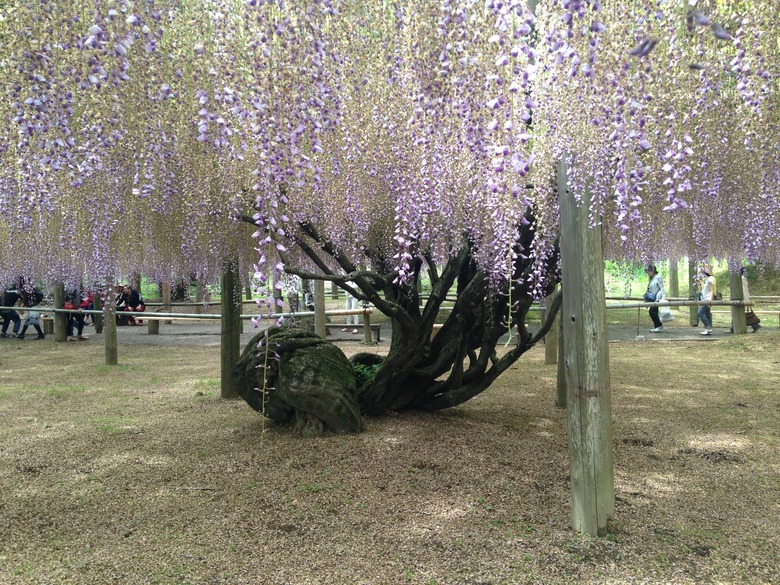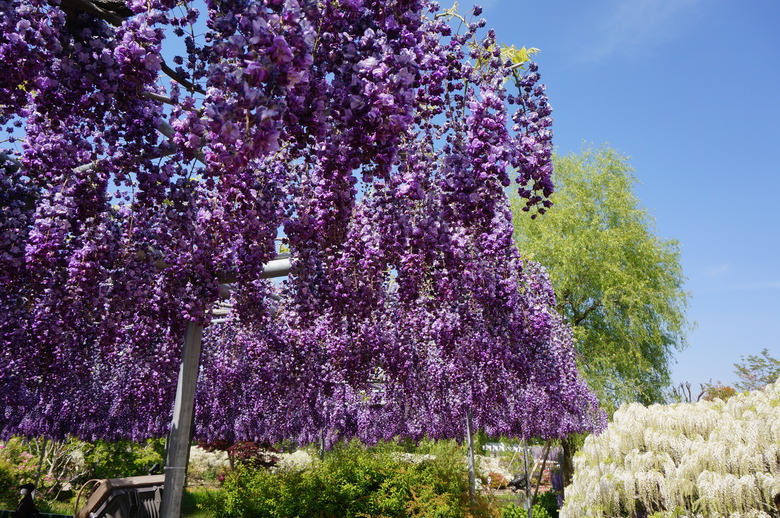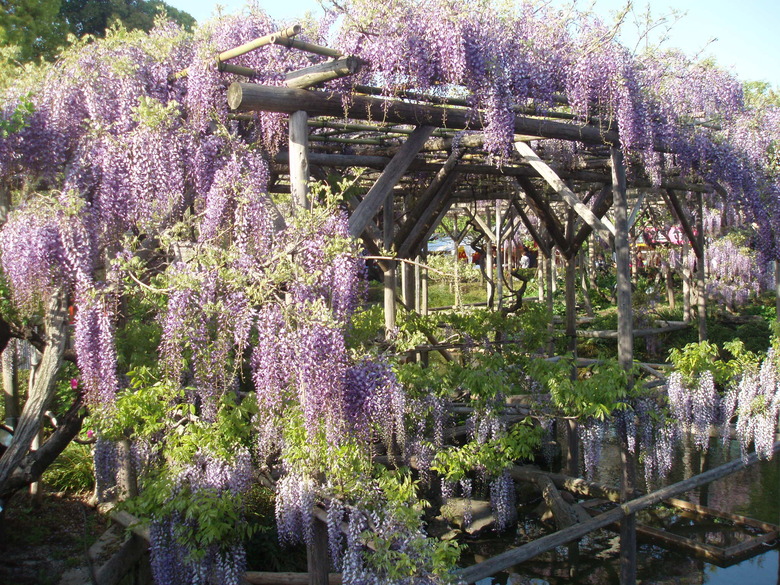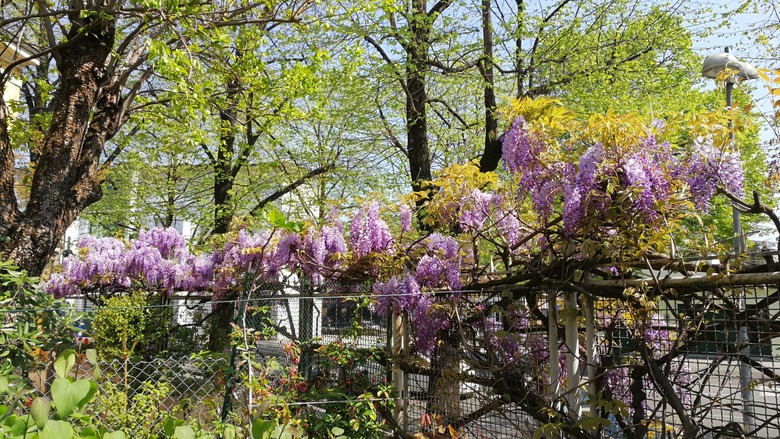The Meanings Of Wisteria Flowers
The mysterious wisteria, twining around porch columns and into eaves, heralds the arrival of spring with its magnificent, cascading flowers. Does it symbolize beauty? Or, perhaps rebirth, with its transformation from a barren tangle of stems into a fairy jungle of purple and white flowers?
This spectacular, twining vine has established a place among the world's lore and mysteries. Wisteria (Wisteria, spp.) has special meaning in Japan and China, but it also held symbolic meaning among the Victorians.
However, the beloved wisteria vine, stunning or meaningful, can behave badly and is capable of strangling any number of other ornamental plants and even whole trees. So if you yearn for a romantic, symbolic wisteria to grace an arbor or front porch, be sure to choose a noninvasive variety.
The Wisteria Name
Wisteria is one of those rare plants with a common name that mirrors its botanical name; botanists and amateur or home gardeners all call this plant by its botanical genus, Wisteria.
Many historians believe that the English botanist Thomas Nuttall was among those who named the plant and that it was named at least partly in honor of the American physician Caspar Wistar, according to the Linda Hill Library.
Wisteria Symbolism
Despite its potentially aggressive nature, the wisteria flower symbolizes something quite different in cultures that have incorporated it into their rituals or philosophies.
Wisteria in Buddhism
Jodo Shinshu Buddhism, also called "Shin Buddhism" in the West, uses a double wisteria in its official crest to form a circle **representing humility and an open and welcoming mind and heart.** The humility is inherent in the way the wisteria flowers appear to hang upside down, as if their heads were hanging down. The wisteria blossoms symbolize new beginnings and the fleeting nature of all things.
Perhaps more in keeping with its growing behavior is that **it also symbolizes strength and hardiness,** as it blooms earlier than many other spring flowers, sometimes even when snow is still present.
Japanese Kabuki Drama
A famous Japanese kabuki dance Fuji Musume, or the "Wisteria Maiden," illustrates the story of a young maiden who embodies the spirit of the wisteria plant: romantic and shy.
Victorian England
The Victorians are famous for flower symbolism and adopted the wisteria **to represent passionate love and longing,** represented by the clinging nature of the vine. Wisteria is not a plant that grows easily in the British climate, but the elite imported it for its rareness and beauty and came to associate the wisteria flowers with the phrase "I cling to you."
Be Careful With Japanese and Chinese Wisteria Plants
While wisteria has a powerful symbolism in Asian culture, both Japanese wisteria (Wisteria floribunda, USDA hardiness zones 4 to 9) and Chinese wisteria plants (Wisteria sinensis, zones 5 to 8) are highly invasive and are not recommended for planting in many areas of the U.S.
The vining tendrils of Japanese and Chinese wisteria plants insinuate themselves under roof shingles and twine around just about anything. Mature wisteria plants continue to produce stems from anywhere on the main trunk—some of which, if they don't find an immediate structure on which to climb, creep along the ground many yards away until they do. Wisteria vines have been known to girdle trees, depriving them of nutrients.
A better-behaved wisteria species is American wisteria (Wisteria frutescens, zones 5 to 9), which is not as aggressive. Sometimes called Texas or Kentucky wisteria, it is native to various southern states. This species produces the same pendulous purple flowers or white flowers in spring with canes up to 40 feet, and it still can represent all that wisteria has come to mean.
References
- North Carolina State Extension: Wisteria Sinensis
- North Carolina State Extension: Wisteria Floribunda
- North Carolina State Extension: Wisteria Frutescens
- Davis: Fuji (Wisteria) Matsuri
- Longmont Buddhist Temple: Jodo Shinshu Buddhism
- Marty Gross Film Productions: Fuji Musume – Kabuki Dance
- Petal Republic: Ultimate Guide to Wisteria Flower Meaning & Symbolism
- Linda Hall Library: Scientist of the Day, Caspar Wistar



